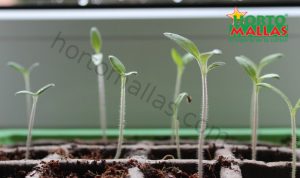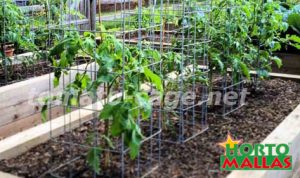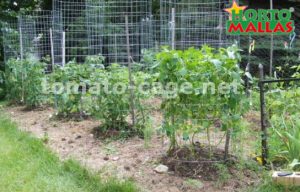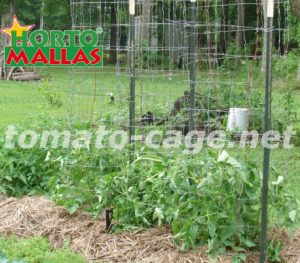Skip to content

The Purpose of a Tomato Cage
In order to get a good yield, tomatoes should always be supported and one of the many methods to do this is to build a tomato cage. Caging is healthy to consider for tomato growers from all profession, from farmers to home gardeners, to aid the growth of their plants and prevent them from rotting in the dirt or weakening from sag. Any type of tomato plant, anything that produces fruit would fare better under a good tomato cage. These cages make it easier in looking out for insect infestation or other deficiencies concerning the plants such as sunburns, bruising, or cracking and also reduces the stress in harvesting the tomatoes.
Cages could be bought with less USD $4 each but farmers could also build their own cages using welded-wire garden fencing with rectangular or square openings. Nevertheless, the cage must always be at least 18-20 inches in diameter as to not hinder the growth of the plant and the amount it would yield.
More preference is given to tomato cages because of its numerous advantages. First off, caging involves less work. After setting up the cage over the tomatoes, pruning or tying is barely needed with no further maintenance to be required. Waiting for the fruits to ripen is all there is to do. The stronger foliage cover could also protect the plants from birds. In comparison to using tomato stakes, tomato vines that are caged produce more fruit, though of a smaller size, while staked and tied plants produce less fruit, though of a larger size which matures earlier. Another method is using a tomato ring.
How to Set Up a Tomato Cage
-
Buy a tomato cage, use a used cage, or create your own.
Look into garden shops or home improvement centers where you could buy tomato cages that are either made of metal, wood, or plastic. You could also use previously used metal cages but make sure to check for faults and rust. Furthermore, as mentioned above, you could construct your own cage. With the garden fencing, create larger cages by rolling it into 18-inch-wide cylinders. Make a circle by cutting, bending, and tying the end of the wires on the opposite ends around the uncut wires. Strong stakes would be required for support with this type of cage.
-
Water plants before caging.
Through watering, the soil could be softened to ease the installation of the cages into the dirt.
-
Next to each plant, erect a stake.
Positioning a stake would help the plants on being upright and keeping them from falling over, fully supporting their weight and growth. A hammer or a mallet can be used to push down the stake. For the heavier plants, tie a piece of coated wire or twine around the base of the plant and the stake to anchor them.
-
Center the cage before pushing it into the ground.
Be careful in setting up the cage and lowering them. Make sure not to damage any of the leaves or tomatoes and be sure to center the cage to have the plants standing in the middle. With your hands or a hammer, push the cage together with the wire anchors into the ground.
-
Test the cage’s stability.
Check if the cage is held in place and if none of the plants are moving unsteadily. Pound the stake harder into the ground until the cage stops shifting.
-
Arrange the tomato plants.
Start positioning plants over the cage to let the structure do its job in supporting their growth and help it in training tomatoes.
-
Keep the cage for the rest of the season.
Inspect the plants regularly and adjust the branches whenever it’s needed to help the cage support its weight. The plants could be pruned and the tomatoes could be harvest on the open sides of the cage. Remove the cage once the plants stop producing fruit, clean it up and store it properly for the next season.



